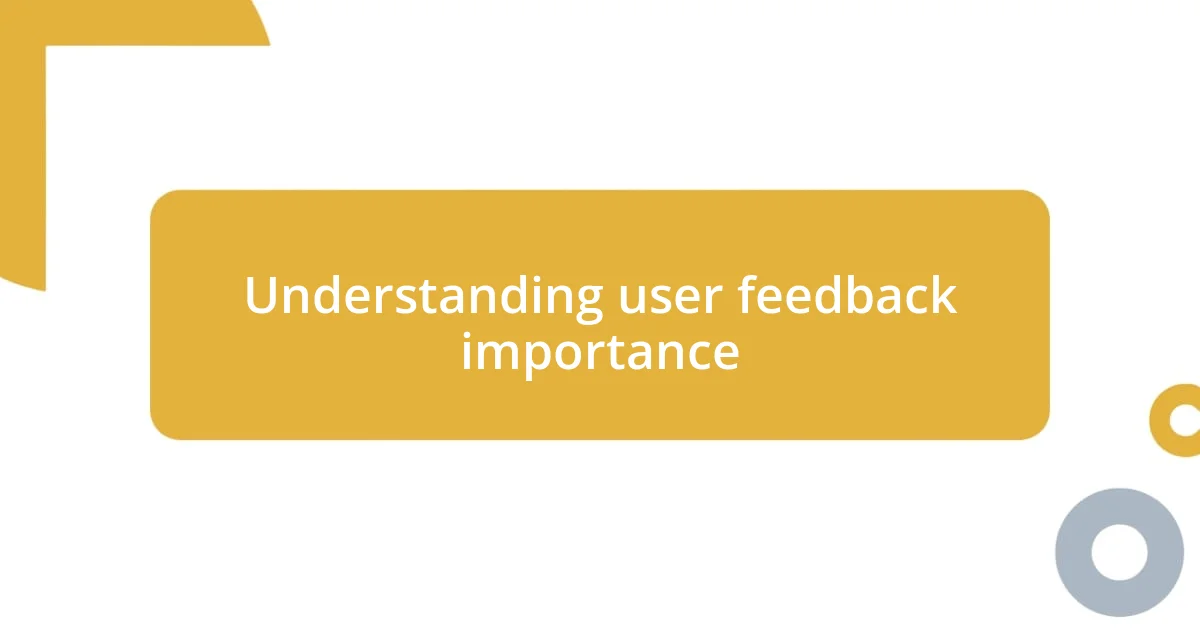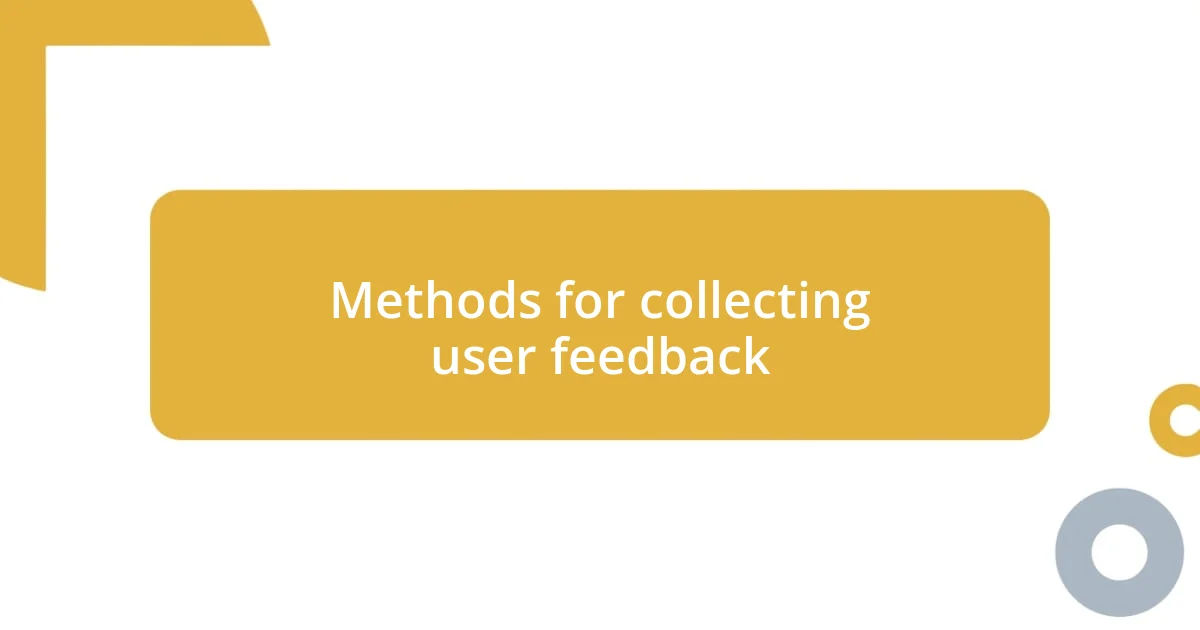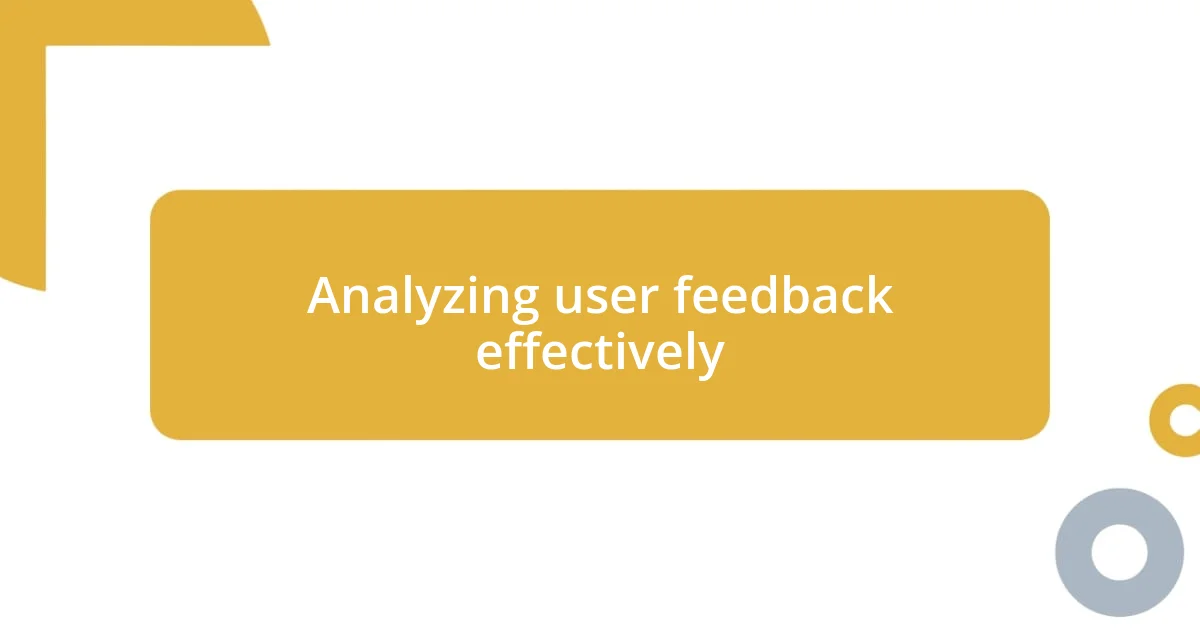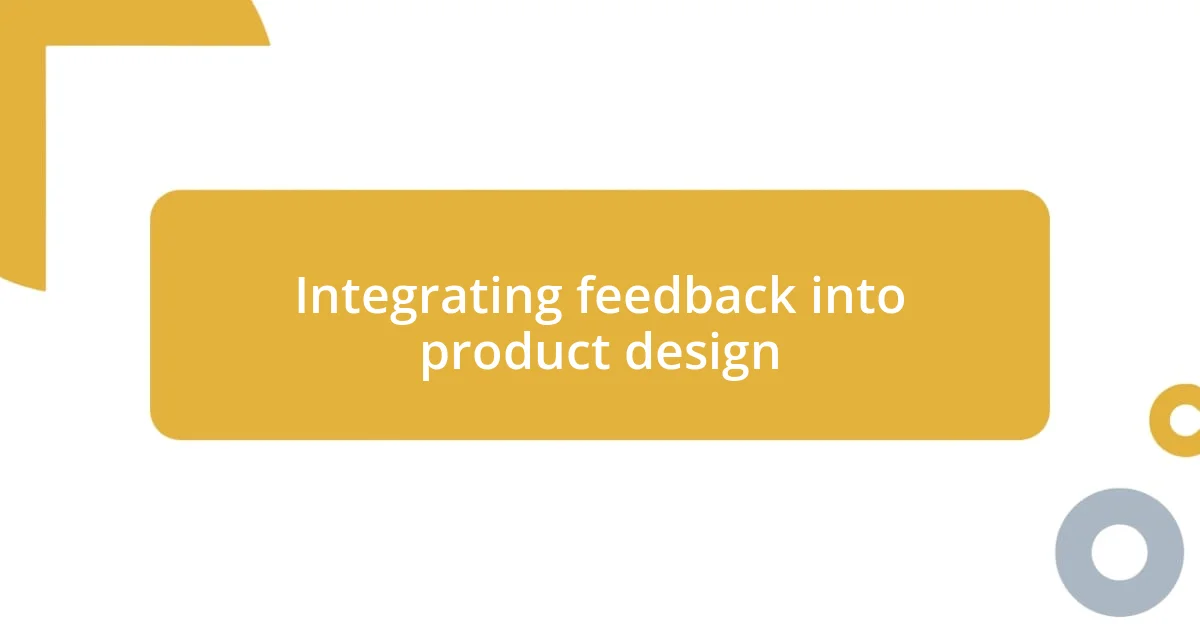Key takeaways:
- User feedback is essential for understanding user experiences and can reveal both issues and opportunities for innovation.
- Effective methods for collecting feedback include online surveys, interviews, usability testing, feedback widgets, and social media listening.
- Integrating user feedback into product design fosters collaboration and community, but requires careful prioritization to balance user desires with the product’s core vision.

Understanding user feedback importance
User feedback is crucial because it provides direct insight into how individuals experience a product or service. I remember a time when I launched a new feature, and I was confident it would impress users; however, the feedback revealed that it was unintuitive and frustrating. This experience taught me that our assumptions can sometimes lead us astray, highlighting the need for a genuine conversation with users.
When I reflect on past projects, it becomes clear that user feedback not only sheds light on issues but also unveils opportunities for innovation. Have you ever wondered why some ideas fall flat while others soar? Often, the difference lies in thoughtful listening and adapting to what users truly want.
Integrating user feedback into the development process fosters a sense of community and trust. I once received a suggestion from a user that completely transformed our approach to a feature. This moment reminded me that every piece of feedback is a chance to strengthen the relationship with your audience, making them feel valued and appreciated.

Methods for collecting user feedback
Gathering user feedback can happen through various methods, each with its unique strengths. One approach I’ve found particularly effective is surveys—those straightforward questionnaires that can yield a wealth of information. I once sent out a survey after launching a new product update and discovered specific pain points that hadn’t crossed my mind. Analyzing the responses made me realize how crucial it is to ask the right questions.
Here are some popular methods for collecting user feedback:
- Online Surveys: Quick and easy to distribute, often yielding a high volume of responses.
- Interviews: One-on-one conversations provide deeper insights into user experiences.
- Usability Testing: Observing users interact with your product helps identify usability issues firsthand.
- Feedback Widgets: Integrating feedback tools directly into your product allows for immediate user input.
- Social Media Listening: Monitoring comments and mentions can reveal user sentiment and potential improvements.
Each method has its value, and I often mix them up to get a comprehensive view of user perspectives. For instance, after interviewing several users, I supplemented their insights with feedback widget responses, which offered immediate thoughts from casual users. This blend not only helped me see the bigger picture, but it also reminded me of how diverse user experiences can be.

Analyzing user feedback effectively
Analyzing user feedback effectively involves digging deeper than surface-level comments to understand the underlying sentiments. I’ve learned that categorizing feedback into themes can shed light on recurring issues or requests. For example, when I was sifting through feedback about a product launch, I found clusters of comments about usability. It was eye-opening to see how often users struggled with a specific feature, which prompted a redesign that dramatically improved their experience.
Another strategy I find valuable is quantifying feedback when possible. This can involve using metrics like Net Promoter Score (NPS) or tracking sentiment analysis on collected comments. I remember integrating sentiment analysis into our feedback process, and it was fascinating to see how certain phrases popped up consistently among dissatisfied users. This allowed my team to prioritize the areas needing urgent attention, streamlining our response efforts.
Lastly, I can’t overstate the importance of sharing insights with the entire team. Engaging cross-functional collaboration makes sure everyone understands user pain points and successes. I recall a brainstorming session where sharing user feedback led to innovative solutions that wouldn’t have come to light in isolation. It was rewarding to witness that collective ownership, knowing the team was rallying around real user needs.
| Feedback Method | Key Insights |
|---|---|
| Online Surveys | Quick insights, often broad audience. |
| Interviews | Depth of understanding, personal stories. |
| Usability Testing | Firsthand identification of issues. |
| Feedback Widgets | Immediate thoughts, casual user input. |
| Social Media Listening | Real-time sentiment, public comments. |

Integrating feedback into product design
Incorporating user feedback into product design isn’t just a checkbox; it shapes the very essence of what we create. For me, it’s thrilling to see user insights directly influence design choices. I remember a project where user suggestions led us to iterate a feature that initially seemed great in theory but fell short in practice. Seeing those changes resonate with users was incredibly fulfilling and undeniably reinforced the value of their input.
I’ve also found that involving users early in the design process can cultivate a sense of ownership among them. Imagine presenting a draft of a product and then receiving real-time feedback as users interact with it. I once held a design workshop where users could sketch out their ideas, and their enthusiasm was contagious. Witnessing them light up over their contributions made it clear that integration isn’t just about collecting feedback; it’s about collaboration and fostering a community around your product.
At times, it can feel overwhelming to sift through the flood of feedback, and that’s perfectly normal. I’ve grappled with balancing user suggestions and maintaining the original vision of a product. However, I’ve learned that prioritizing feedback based on impact and feasibility is crucial. I still recall deciding against implementing a flashy feature that users wanted but recognizing it would dilute the core experience. Striking that balance between user desires and product identity is a constant journey, but it’s what propels us toward better design.














